How to use a weed eater: expert tips to get a neat lawn
Discover how to use a weed eater effectively with advice from the experts

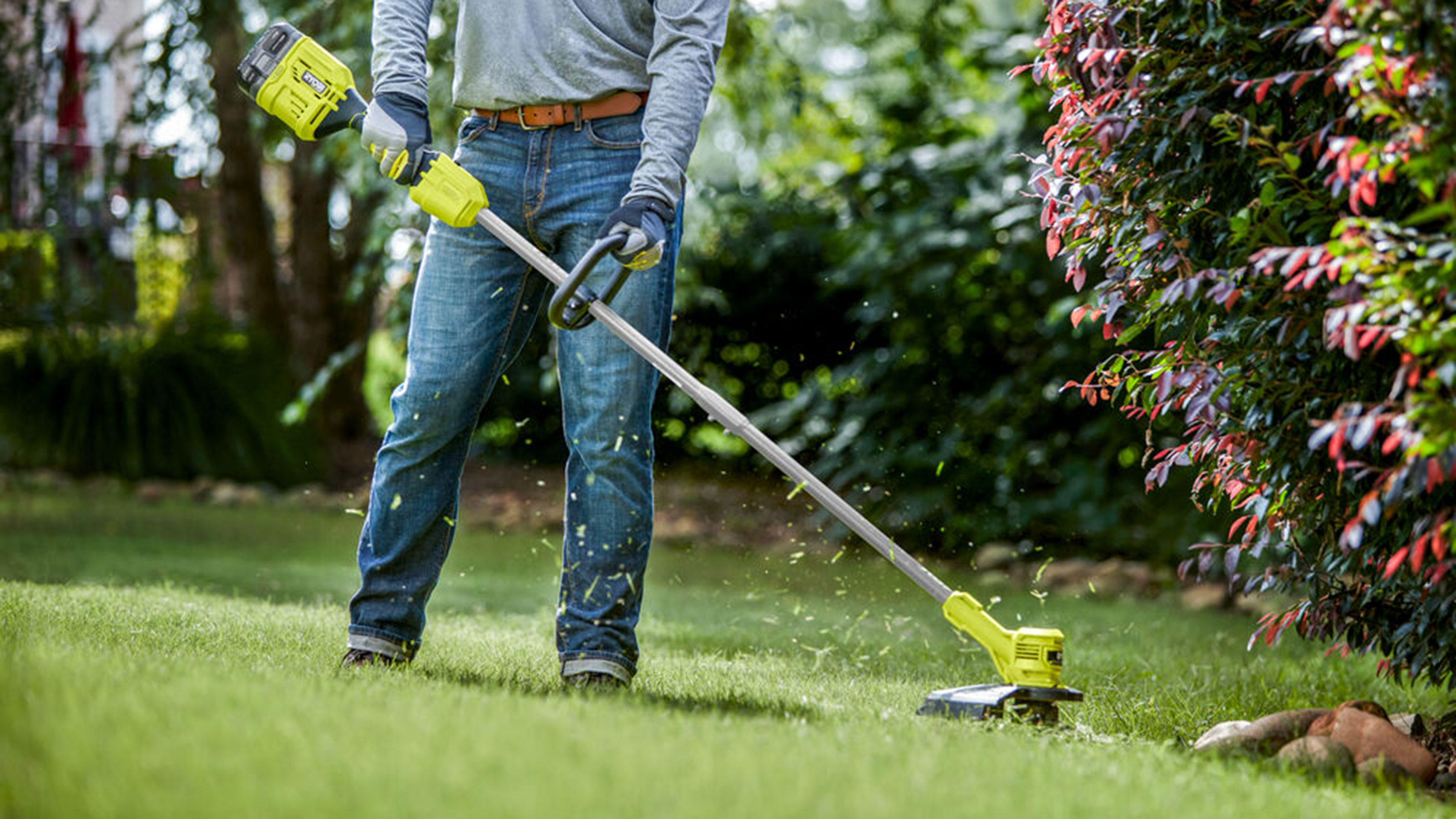
If you want to keep grass neat, and unwanted growth at bay, it’s vital to know how to use a weed eater correctly. One of these string trimmers, also known as strimmers, will help you keep your yard neat and tidy without undue effort.
Knowing how to use the best strimmer effectively means you’ll be able to reach the areas you can’t get to with the lawn mower, you can spare yourself the time and effort involved with using hand tools to trim along the edges of lawns, and you can cut down weeds. Result? More time to tend plants and enjoy your yard.
So you can use yours like a pro, we’ve asked the experts to share the secrets of how to use a weed eater, getting the best from one of these tools, and the mistakes they often see – and how to avoid them.
Step-by-step tips for how to use a weed eater
Knowing how to mow the lawn correctly will ensure your grass is in the best possible condition. Follow these steps on how to use a weed eater or string trimmer to make the process of keeping your lawn in great shape even easier.
1. Know the safety practices
Just as it is when using your lawn mower, number one in importance when you’re getting savvy about how to use a weed eater is safety. Both debris and grass fly around when you are using it. ‘Make sure to wear safety glasses, shoes, and gloves to avoid any potential accidents,’ says Helene Keary, assistant marketing manager, Ryobi.

2. Position the trimmer and your body
It’s important to understand the cutting head before you start learning how to use a strimmer. ‘You need to become aware of the direction in which the trimmer line will spin,’ says Helene Keary. ‘If it goes in an anti-clockwise direction, the grass will be thrown out to the left, so you need to position your body accordingly.’
Holding the equipment correctly is crucial. ‘It should be held just above the ground at an angle so that debris deflects away from you,’ says Ryan Patterson, Husqvarna consumer segment manager.
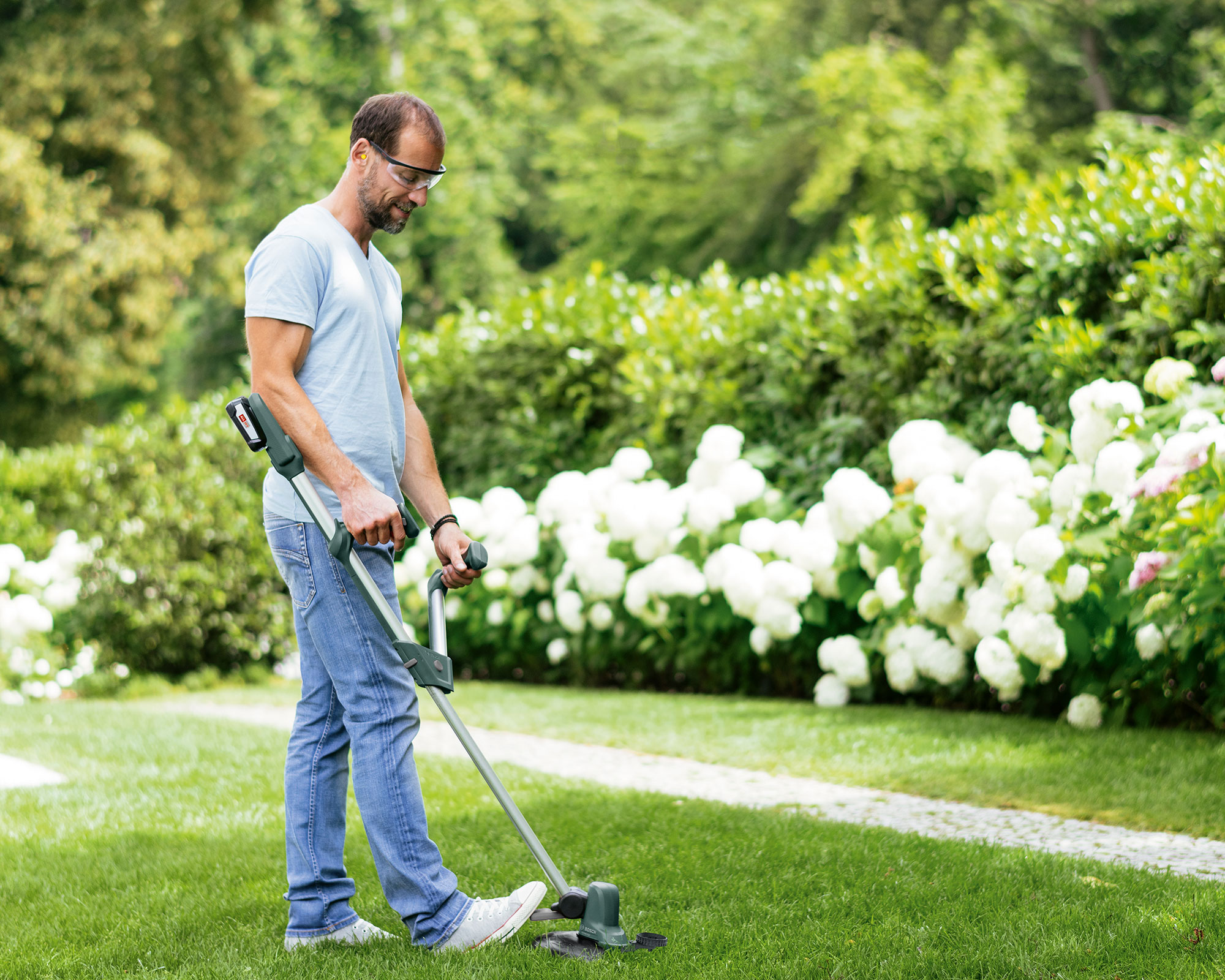
3. Work carefully
Begin trimming your lawn, but make sure you work with care. ‘It’s important to let the line do the work,’ says Ryan Patterson. ‘Never press the line into the ground or trimming area and make sure you have a steady hand, keeping the trimming pace slow.’
Cutting the grass on a flat surface? ‘You’ll want to hold the trimmer level against the surface,’ says Helene Keary.
Pay attention to planting – you don't want to be causing damage to your garden borders. ‘You need to be especially careful when working around plants,’ Ryan adds. ‘You should consider shortening your line to about 5 inches (13cm) and reduce the engine speed. Never make any adjustments to your line without turning the engine off first.’
Working on long grass? ‘For longer grass, trim the top first, repeating until you have the grass at your preferred length,’ he recommends.
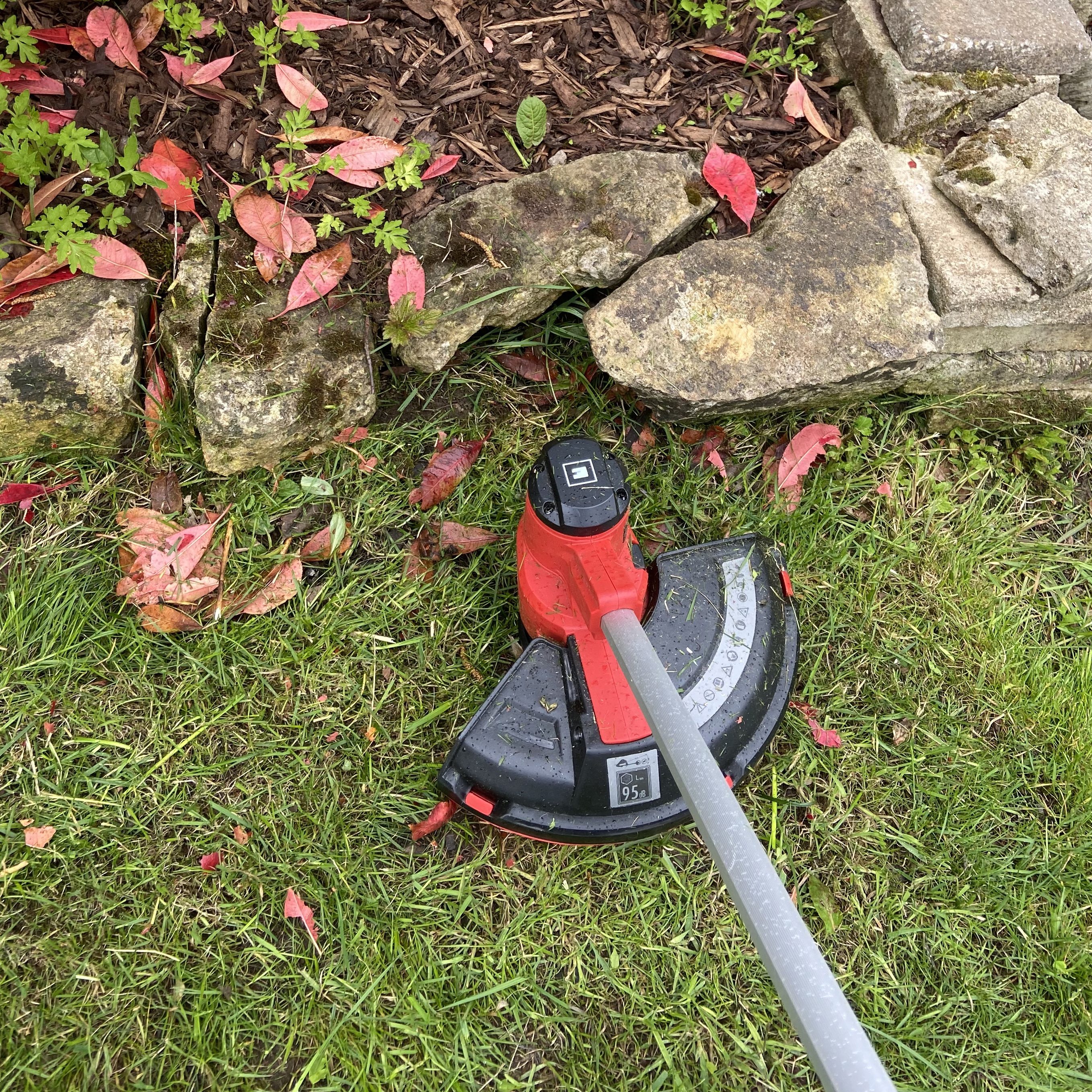
4. Tackle edges
You may be using your weed eater as an edger, too to help neaten your lawn edging ideas. ‘This application can be more taxing on the unit than just trimming tall grass, so it is important to use the tools properly for consistent results and the best longevity of the tool,’ says Will Hudson, portable outdoor power sr. merchant at The Home Depot.
‘Be careful when holding the trimmer so the head is in a vertical position. The goal is to run the line between the grass and concrete when edging along a sidewalk or driveway, or to keep the line on the edge of the grass when edging along a flowerbed. Try not to cut into the grass as it will cause scalping and possible long-term scarring and damage to your lawn.’
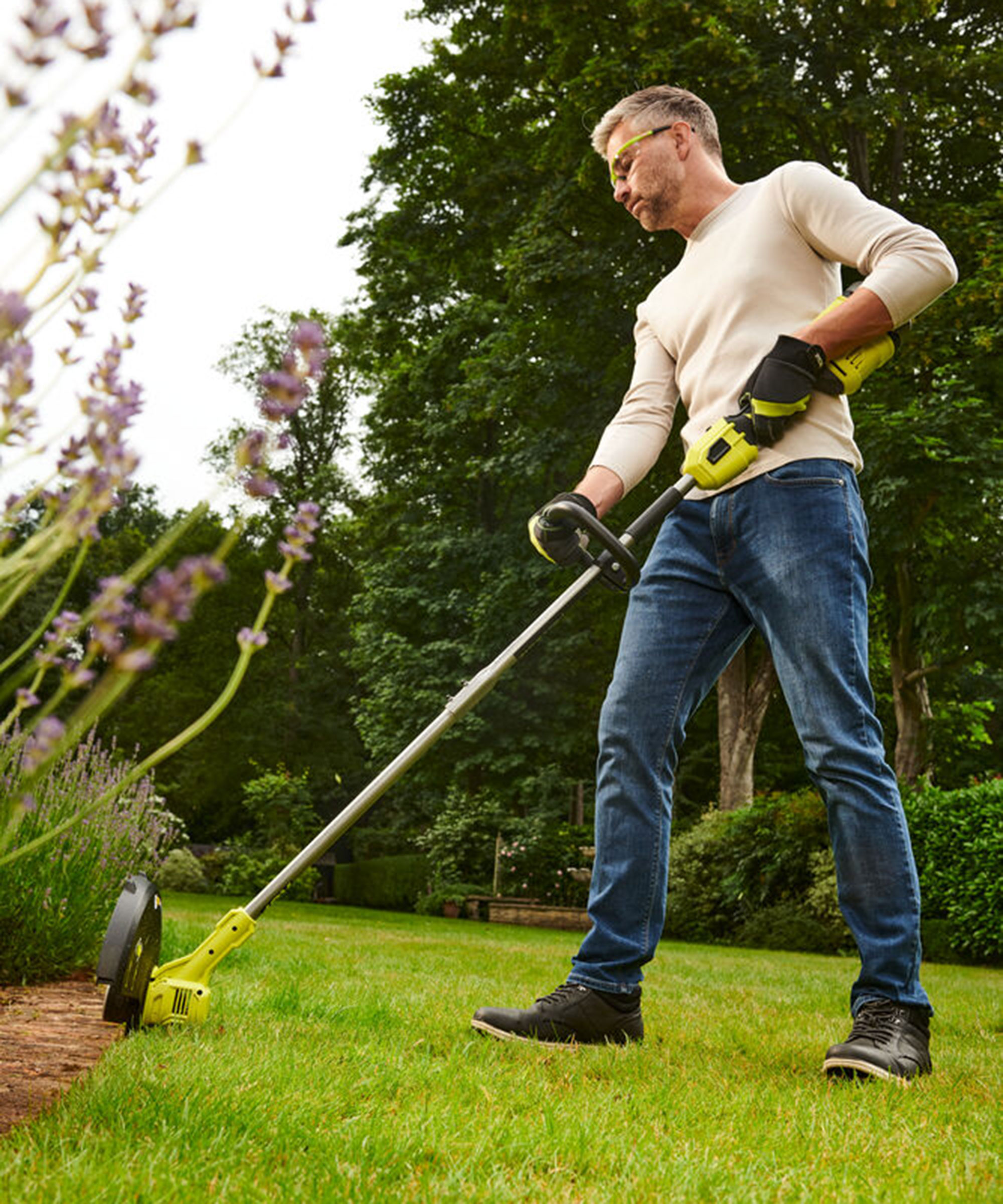
5. Cut thick grass and vegetation
Using a brush cutter attachment? ‘This is going to help you cut down thick grass and vegetation that have grown out of control,’ says Helene Keary. ‘In this instance, the tool should be used in long, sweeping motions.’
How to get the best from a weed eater
To get the best from a weed eater, consider both electric and gas-powered versions.
‘If you are trimming grass far away from your house or require more freedom, consider a gas trimmer,’ says Ryan Patterson. ‘For easier handling, simpler maintenance and a quieter cut, a cordless battery grass trimmer is great for medium to large gardens while remaining as powerful as gas.’
For edging as well as trimming, you might want to invest in a tool that makes this easier. ‘Purchasing a string trimmer that rotates for easy edging or has an edging guide will help ensure you get a clean cut to your edges,’ says Will Hudson. ‘Attachment-capable trimmers are also a great option for dedicated edging.’
Maintenance is an important element of how to use a strimmer if your weed eater is to last well. Use these tips from Ryan:
- To keep your trimmer line flexible and ensure a longer lifespan, it’s important to allow it to absorb moisture before use. Some 24 hours before use should be enough, or 48 hours if it has not been used for a while.
- As with any garden equipment, it is important to keep it clean and regularly serviced by your local dealer to ensure it is ready for your garden for years to come.
- Keeping spare replacements for accessories, such as trimmer line, is also useful, especially if you are in the middle of a job or caring for your lawn.
- Store your trimmer securely and somewhere which is dry and ideally off the ground to avoid dust and debris. There's lots of practical options in our garden tool storage ideas.
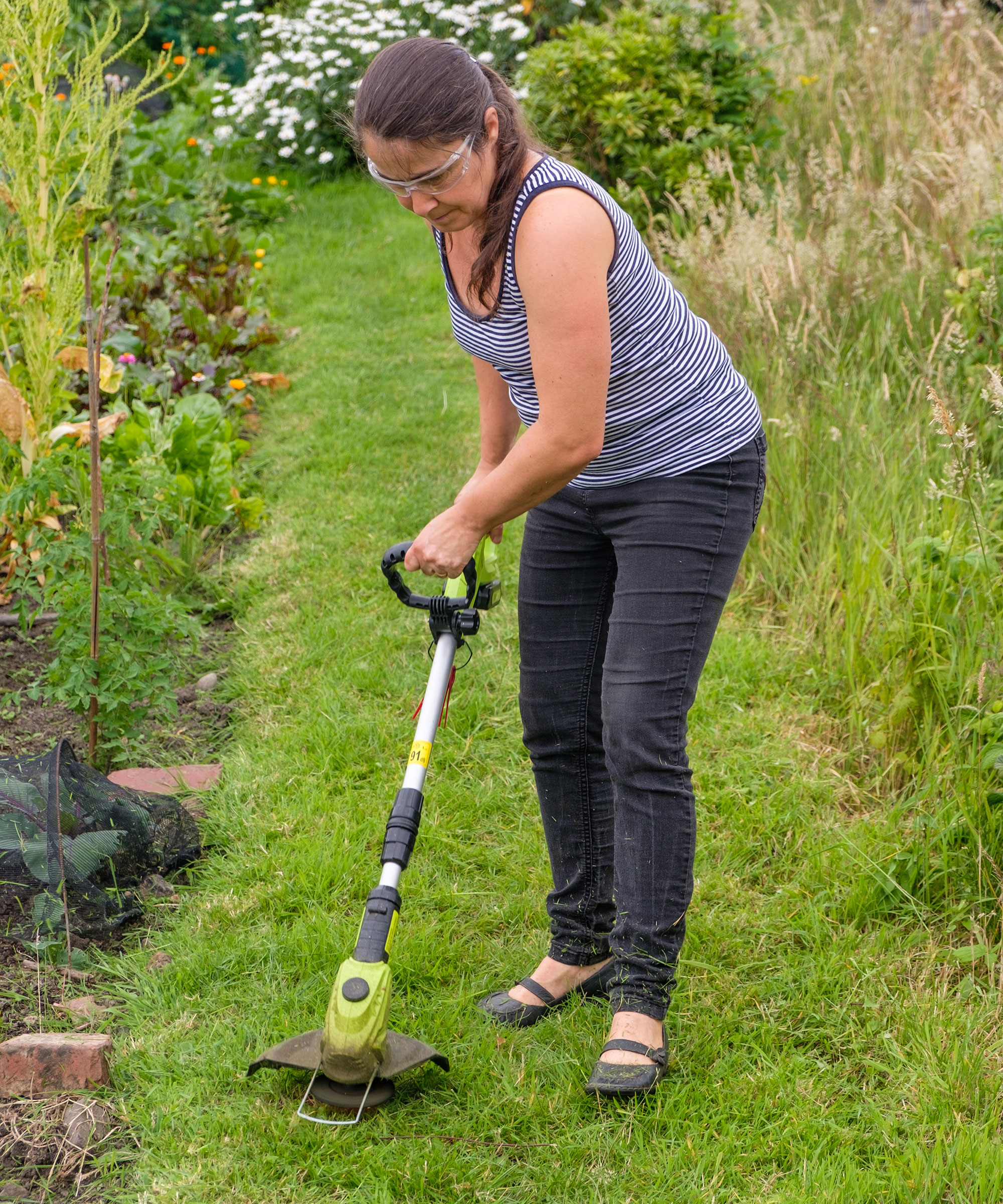
Weed eater mistakes and how to avoid them
Wondering how to use a weed eater without making the common mistakes? Use these guidelines from Ryan Patterson:
- Ensure you wear correct PPE (personal protective equipment) including protection for your eyes, ears, hands, and feet to protect against debris. Avoid wearing loose or baggy clothing. The same rules apply when it comes to how to use a hedge trimmer and how to use a pressure washer safely too.
- Assess the spin direction of your trimmer. If it spins anti-clockwise, grass debris will eject to the left with better cutting to the right-hand side. When working close to an obstacle, keep the right side of your body closer to your working area to eject the grass to the left as, if not, it will eject into your cut path and bog down the trimmer.
- Do not press the trimmer too close to the ground as this can lead to damage to both your lawn and your trimmer.
- If using a battery-powered trimmer, ensure that the battery is removed when storing as leaving this charging can lead to deterioration over time.

Sarah is a freelance journalist and editor writing for websites, national newspapers, and magazines. She’s spent most of her journalistic career specialising in homes and gardens and loves investigating the benefits, costs and practicalities of home improvement. It's no big surprise that she likes to put what she writes about into practice, and is a serial house revamper.
